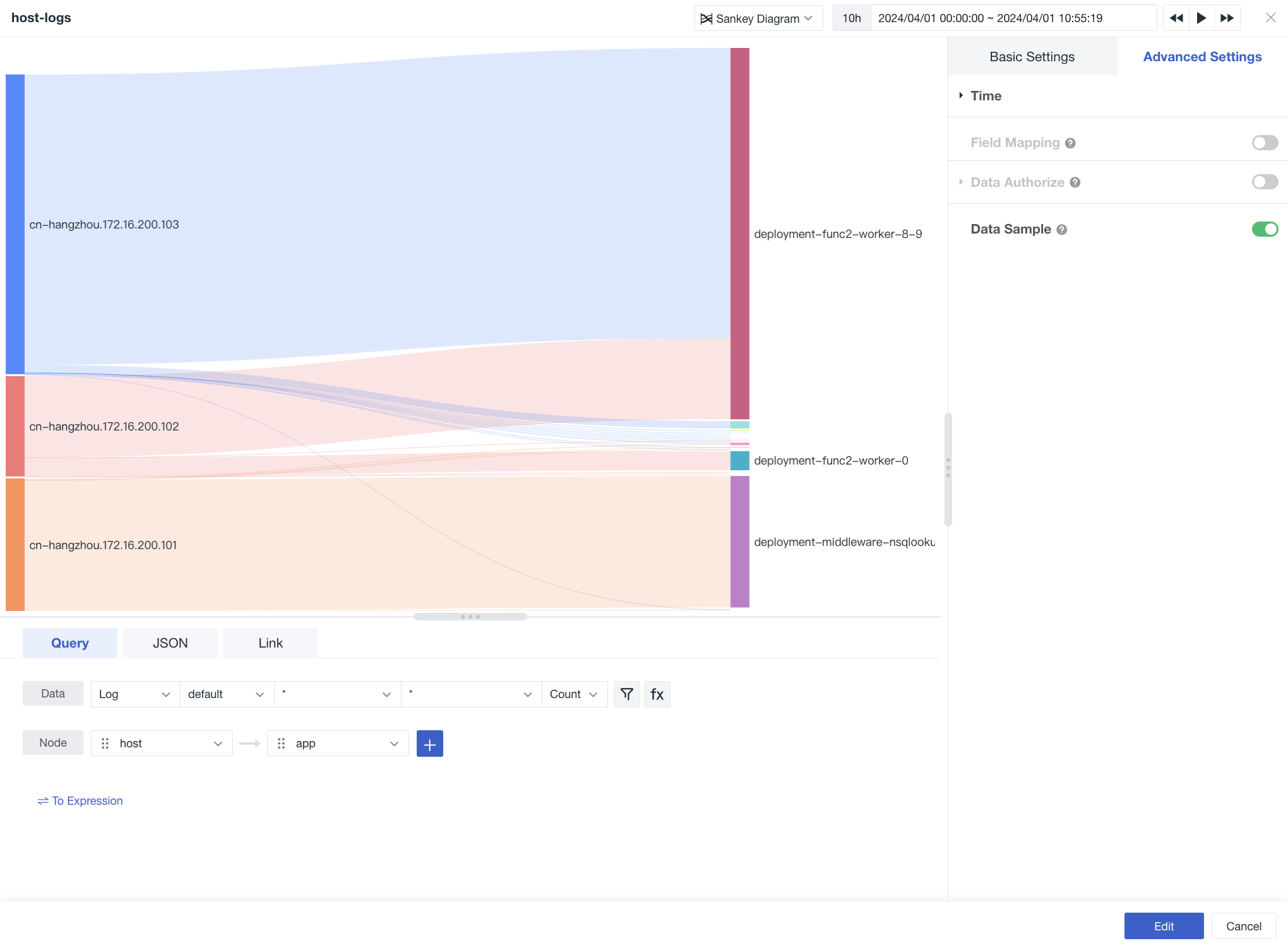Sankey Diagram¶
A special type of flow diagram used to display the flow of data or energy. For example, it can show traffic from one page to another, or energy transfers between different parts of a system. Through a Sankey diagram, you can quickly understand the flow and distribution of data.
Chart Query¶
-
Size: Query data such as Metrics, logs, events, etc.
-
Nodes: By default, two options are displayed; you can select from the dropdown or press Enter to create custom nodes. Up to 6 nodes can be added; you can drag to adjust the order of nodes.
Chart Configuration¶
For more details, refer to Chart Configuration.
